 The competition in crop protection is getting rather friendly. Two of the largest suppliers of technology-based agricultural solutions in the U.S., Monsanto and Dow AgroSciences, are teaming up in the unprecedented release of an eight-gene stacked corn combination. See the Zimfo Bites Melissa posted for media event information.
The competition in crop protection is getting rather friendly. Two of the largest suppliers of technology-based agricultural solutions in the U.S., Monsanto and Dow AgroSciences, are teaming up in the unprecedented release of an eight-gene stacked corn combination. See the Zimfo Bites Melissa posted for media event information.
Monsanto and Dow AgroSciences LLC, a subsidiary of The Dow Chemical Company, have reached a cross-licensing agreement aimed at launching SmartStax™, the industry’s first-ever eight-gene stacked combination in corn. The agreement is expected to create a new competitive standard for stacked-trait offerings and present an expanded growth opportunity for both companies’ seed brands and traits businesses by the end of the decade.
 “By bringing together the two companies that have developed and commercialized the trait technologies widely used in agriculture today, we can provide farmers an ‘all-in-one’ answer to demands for comprehensive yield protection from weed and insect threats,” said Carl Casale, executive vice president of strategy and operations for Monsanto. “Farmers will have more product choices to optimize performance and protection, and that translates into a higher-yielding opportunity and a new growth proposition for their businesses and ours.”
“By bringing together the two companies that have developed and commercialized the trait technologies widely used in agriculture today, we can provide farmers an ‘all-in-one’ answer to demands for comprehensive yield protection from weed and insect threats,” said Carl Casale, executive vice president of strategy and operations for Monsanto. “Farmers will have more product choices to optimize performance and protection, and that translates into a higher-yielding opportunity and a new growth proposition for their businesses and ours.”
“The combination of these trait technologies signals the start of the next generation of products with improved plant protection and yield increases for the farmer,” said Jerome Peribere, president and CEO of Dow AgroSciences. “These combinations provide tremendous value to the grower while better protecting the technology-bearing crops from insect and weed resistance.”
Multi-Gene Product Set to Expand Business Opportunities for Both Companies
Under the agreement, the companies will create a novel seed offering that combines eight different herbicide tolerance and insect-protection genes into top-performing hybrids for the most complete control ever available. The product will include the companies’ respective above- and below-ground insect protection systems, including Dow AgroSciences’ Herculex® I and Herculex RW technologies; Monsanto’s YieldGard VT Rootworm/RR2™ and YieldGard VT PRO™ technologies; and the two established weed control systems, Roundup Ready® and Liberty Link®.
Read More


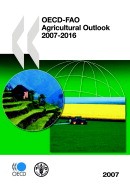 The more information I receive and read from the FAO, the more I’m disillusioned with the whole organization. I think there’s a lot of well-meaning people there but between them and the Organization for Economic Co-operation (OECD) I’m now more inclined to put them in the whacko classification. Take their
The more information I receive and read from the FAO, the more I’m disillusioned with the whole organization. I think there’s a lot of well-meaning people there but between them and the Organization for Economic Co-operation (OECD) I’m now more inclined to put them in the whacko classification. Take their  In just a couple days Cindy and I will be winging our way to Japan and the IFAJ Congress 2007. What a week for ZimmComm New Media. Cindy’s in Brussels now as you’ve probably read and I’m back from Canada. Actually I got back last night and went up to Des Moines today to host the first in a video series project we’re working on. More on that in coming weeks. So we’re racking up some agrimiles lately and it’s not going to slow down any time soon.
In just a couple days Cindy and I will be winging our way to Japan and the IFAJ Congress 2007. What a week for ZimmComm New Media. Cindy’s in Brussels now as you’ve probably read and I’m back from Canada. Actually I got back last night and went up to Des Moines today to host the first in a video series project we’re working on. More on that in coming weeks. So we’re racking up some agrimiles lately and it’s not going to slow down any time soon.
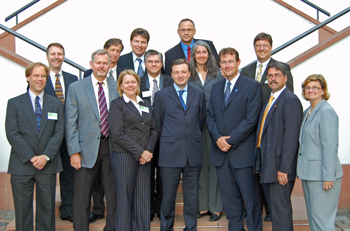 You have to admit, this is a darn good looking group. We do clean up well. Along with myself, the seven other journalists on the trip and our BASF communications manager hosts are pictured BASF Ag Products division president Michael Heinz, with group VP for strategic marketing of ag products Emmanual Butstraen to his left and group VP North America Ag Products Markus Heldt to his left. Top middle is Peter Eckes, Senior VP for Global R&D. I already posted an interview with Michael and will feature interviews with the others here in future posts.
You have to admit, this is a darn good looking group. We do clean up well. Along with myself, the seven other journalists on the trip and our BASF communications manager hosts are pictured BASF Ag Products division president Michael Heinz, with group VP for strategic marketing of ag products Emmanual Butstraen to his left and group VP North America Ag Products Markus Heldt to his left. Top middle is Peter Eckes, Senior VP for Global R&D. I already posted an interview with Michael and will feature interviews with the others here in future posts.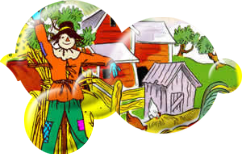 That title comes straight from
That title comes straight from 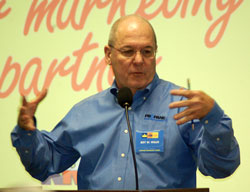
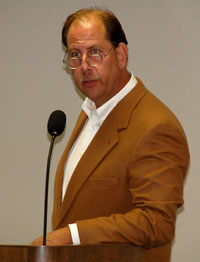
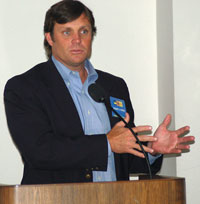 Some of the latest propane technology pairs propane with solar power to offer hybrid electricity generation systems. Stuart Weidie, Chairman of the
Some of the latest propane technology pairs propane with solar power to offer hybrid electricity generation systems. Stuart Weidie, Chairman of the 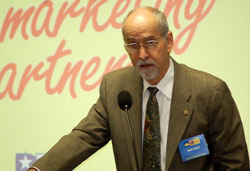
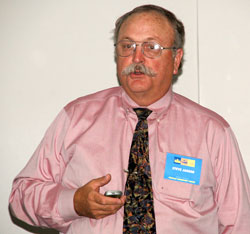 He said the pick-up burned to the ground while there was no escape of gas from the bus. He added that all the children riding the bus exited safely without any instance of injury or death. Dan said industry leaders joke about the safest place to put a propane gas tank in a motor vehicle: “make it the bumper.” He said 12,000 vehicles run on propane fuel in Texas.
He said the pick-up burned to the ground while there was no escape of gas from the bus. He added that all the children riding the bus exited safely without any instance of injury or death. Dan said industry leaders joke about the safest place to put a propane gas tank in a motor vehicle: “make it the bumper.” He said 12,000 vehicles run on propane fuel in Texas.